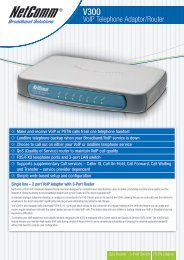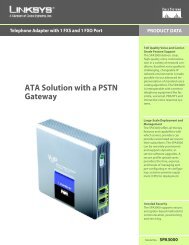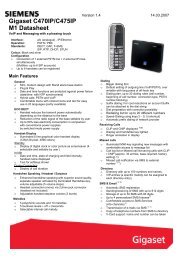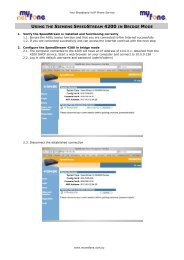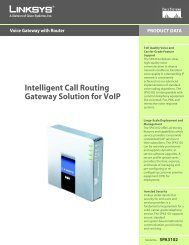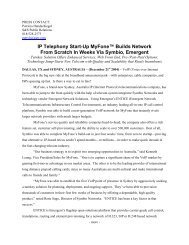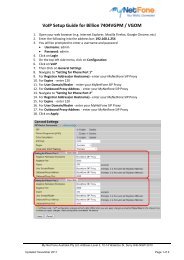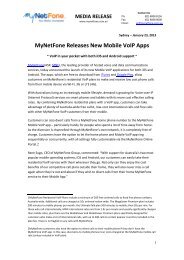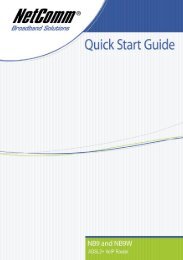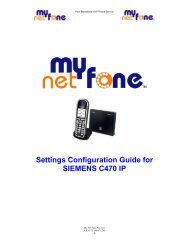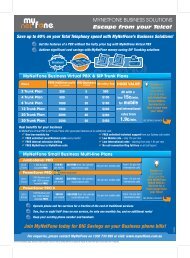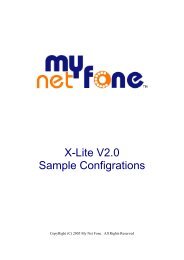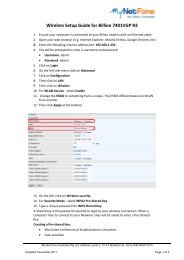You also want an ePaper? Increase the reach of your titles
YUMPU automatically turns print PDFs into web optimized ePapers that Google loves.
would be highly undesirable especially if the call is an emergency). The SPA-3000 uses the followingalgorithm to determine when to close the relay:Off-Hook FXO portClose PHONE Port RelayIf (Loop Current is 0) {Done (since PSTN line is not connected or inactive)}Else {If (PHONE Port is on-hook) {Done (since it is not using the PSTN line)}Else {Open Phone Port Relay (since PHONE port phone is using the PSTN line)While (1) {Monitor FXO port Tip-To-Ring VoltageIf (PSTN line is not in use) {Close Phone Port RelayDone}}}}Notes:- A mechanical click sound can be heard whenever the relay is open or closed.- The STATUS light will be steady on if the FXO port or the FXS port is off-hook.- Once the PHONE Port Relay is closed, it will not be open again until the power is removed.- To be able to invoke the IVR (voice configuration menu), the PHONE Port Relay must be closed.4.2. SPA-3000 Voice Configuration OrganizationThe SPA-3000 can be thought of as having 4 logical voice interfaces, namely,- FXS Interface- FXO Interface- VoIP1 Interface- VoIP2 InterfaceFigure 4.1 shows a block diagram of the voice interfaces and the group of configuration parametersfor controlling their operations. It also shows the possible voice paths with each segment labeled by anumber in parenthesis. We shall refer to the voice path of a call as a connected list of the path labels,such as (1) (2) (3) and (5) (6) (7). Please take a moment to familiarize yourself with thisdiagram. We will make reference to it very often as we describe the different configuration scenarios.Like the SPA-2000, the SPA-3000 configuration parameters are organized into 8 groups, with eachgroup accessed by clicking the corresponding tab on the top of the SPA web page. These 8 groupsare:1. System – Network parameters, DNS, NTP, Syslog, and Debug Servers2. Provisioning – Profile rule, resync intervals and policy, and GPP3. SIP – SIP stack control parameters for both VoIP interfaces© 2003 - 2004 <strong>Sipura</strong> Technology, Inc Proprietary (See Copyright Notice on Page 2) 39



